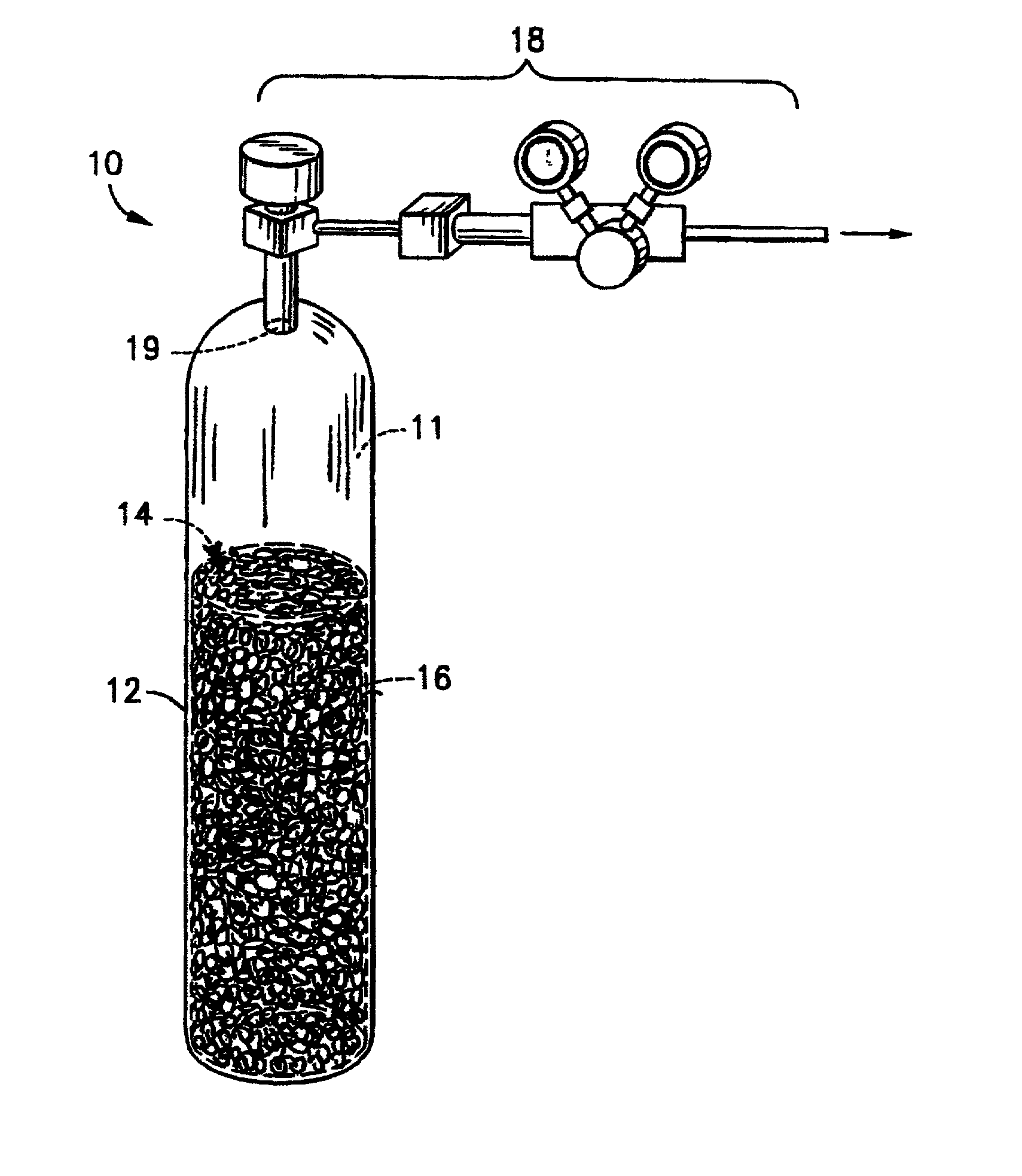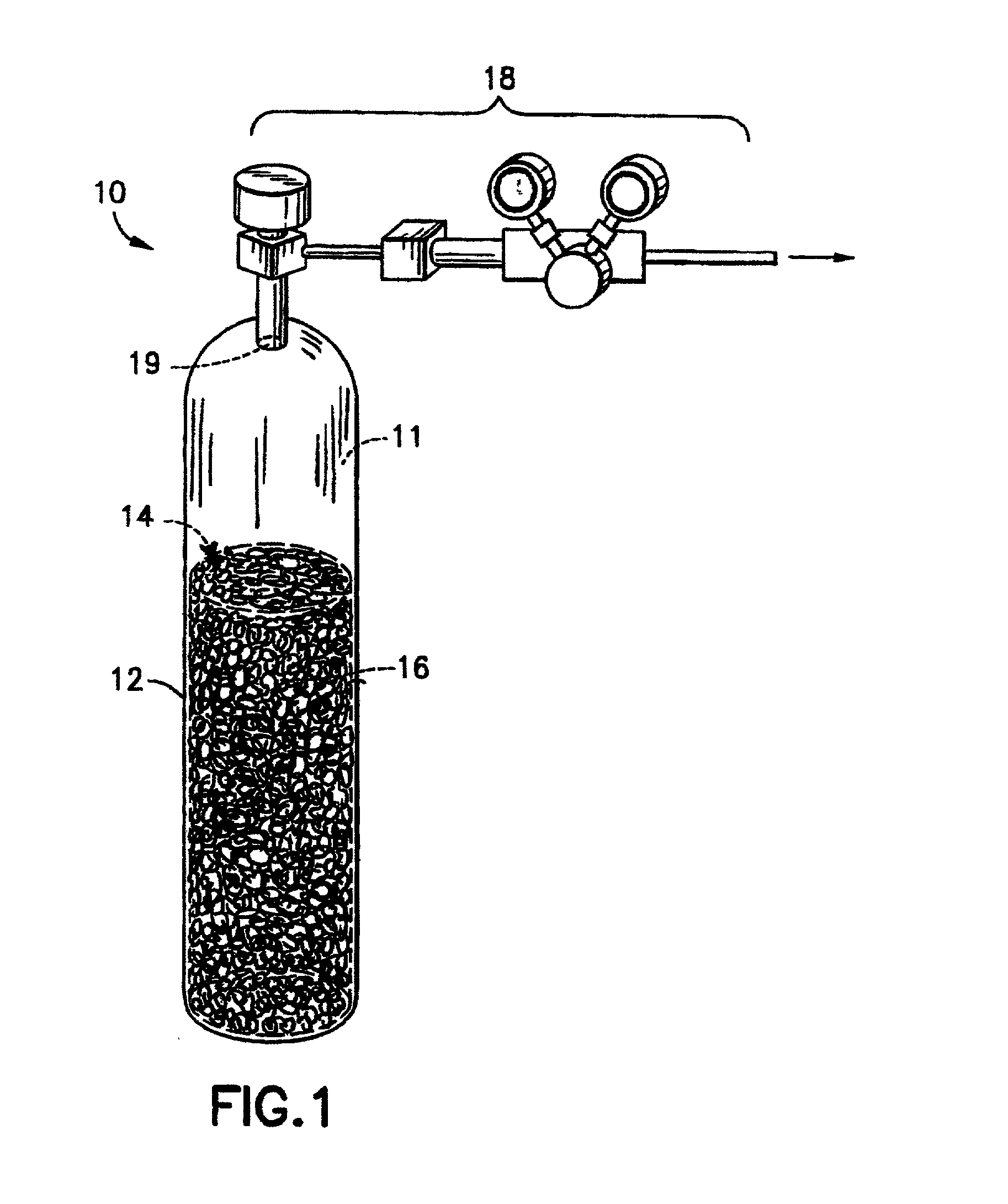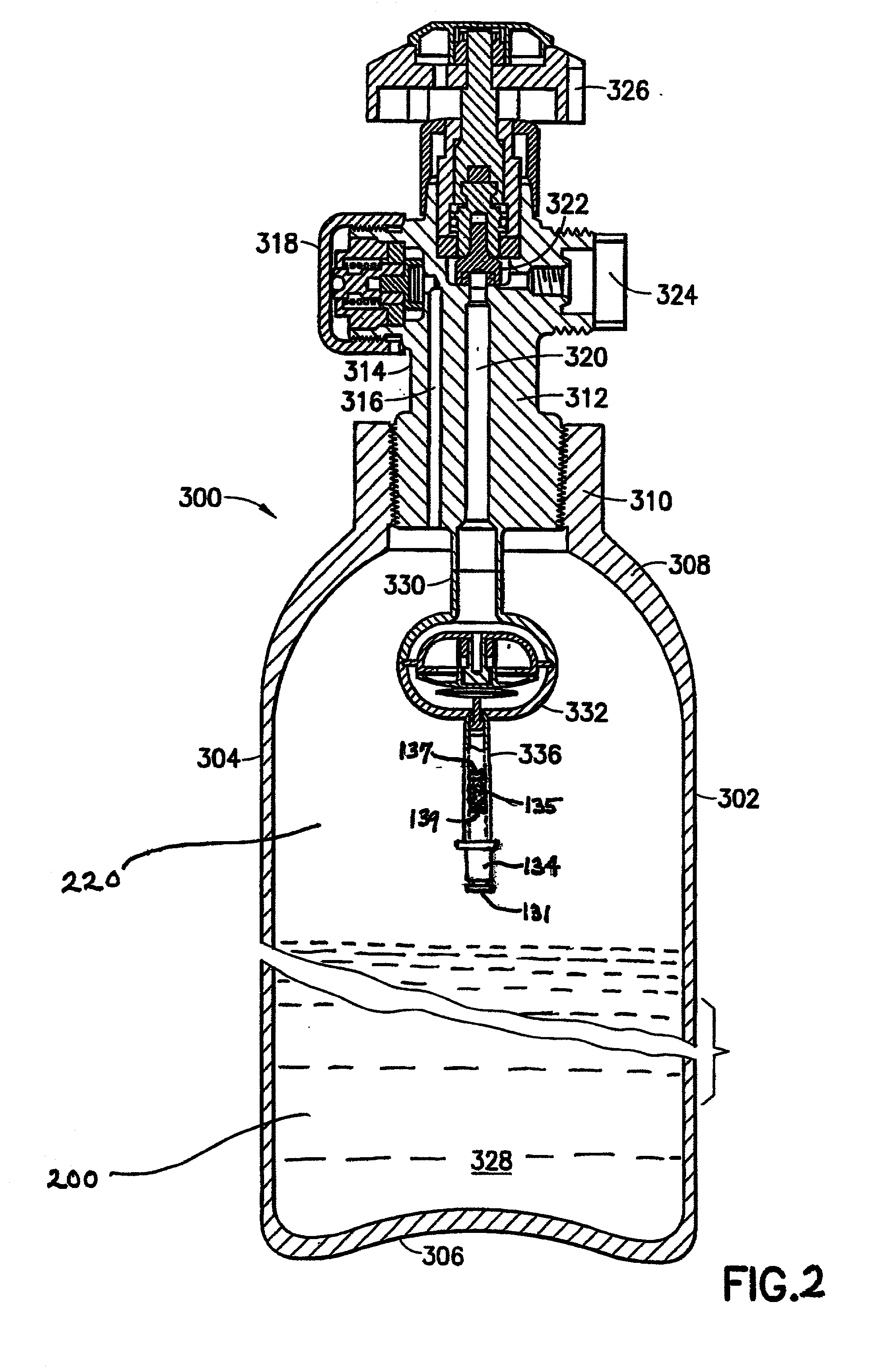Adsorbents for low vapor pressure fluid storage and delivery
a technology of liquid storage and low vapor pressure, applied in the direction of colloidal chemistry, vessel construction details, separation processes, etc., can solve the problems of high cost, high cost, and high cost, and achieve the effect of reducing the risk of unwanted gas release from the cylinder, reducing the risk of gas leakage, and reducing the vapor pressure of the cylinder
- Summary
- Abstract
- Description
- Claims
- Application Information
AI Technical Summary
Problems solved by technology
Method used
Image
Examples
example 1
[0108] Tests were conducted to determine the sorbate storage capacities of two porous metal sorbent materials. The first adsorbent is formed by sintering Inco Type.RTM. 210 nickel powder and the second adsorbent was formed from Incofoam.RTM.. Each sorbent was placed in a 7 micron Swagelok.RTM. filter cup which was then positioned in a stainless steel container having an interior volume of 50 ml.
[0109] Isopropanol (hereinafter "IPA") was added to the sorbent. The total weight of IPA liquid added was recorded, and the container was continuously monitored for detection of any IPA liquid dripping. As soon as dripping of liquid from the container was detected, addition of IPA liquid was immediately terminated, and the total weight of IPA liquid previously added was recorded. The total weight of the added IPA liquid indicated the IPA capacity of the tested adsorbent.
[0110] The test results for the two sorbents respectively formed of Inco Type 210 nickel powder and of Incofoam were as foll...
example 2
[0111] Similar tests for sorbents formed of Inco Type.RTM. 210 nickel powder and of Incofoam.RTM. were conducted to determine the storage capacities of such sorbents for Br.sub.2 gas.
[0112] The test results were as follows:
PUM
 Login to View More
Login to View More Abstract
Description
Claims
Application Information
 Login to View More
Login to View More - R&D
- Intellectual Property
- Life Sciences
- Materials
- Tech Scout
- Unparalleled Data Quality
- Higher Quality Content
- 60% Fewer Hallucinations
Browse by: Latest US Patents, China's latest patents, Technical Efficacy Thesaurus, Application Domain, Technology Topic, Popular Technical Reports.
© 2025 PatSnap. All rights reserved.Legal|Privacy policy|Modern Slavery Act Transparency Statement|Sitemap|About US| Contact US: help@patsnap.com



